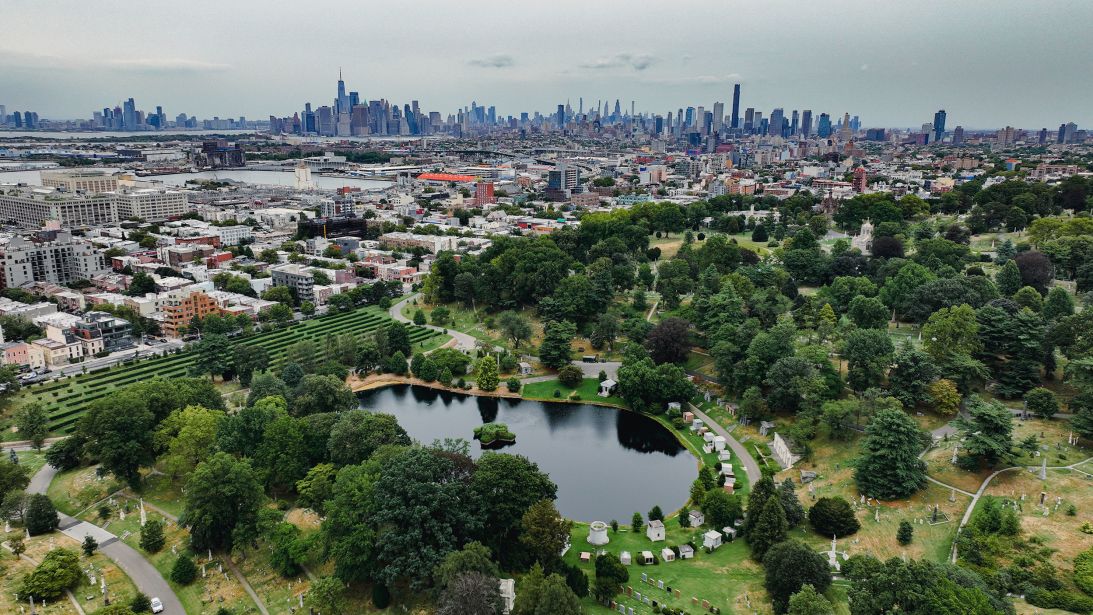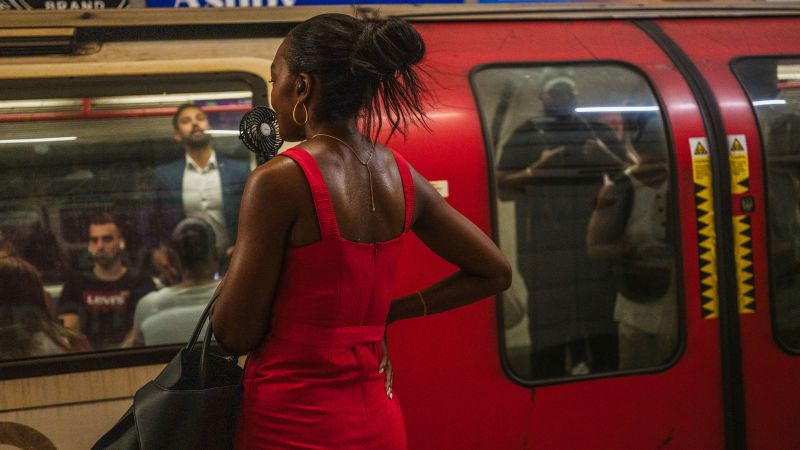When the London Underground was new, Victora was Queen, chimneys had sweeps and England was more than 2 degrees Fahrenheit cooler. But 60% of the Tube system that helped save London from Nazi bombs is now an unairconditioned health hazard on days hot enough to bend track.
Meanwhile, the New York subway hasn’t slept since 1904, and service-suspending waterfalls are becoming more common in every downpour, as platform vents become catchment basins and flash floods gush down the stairs.
Even the world’s newest systems are getting harsh lessons in the designs needed to survive an overheating Earth. When 2021 brought 8 inches of rain in a single hour to Zhengzhou, China, subway cars resembled leaking submarines full of panicked families. Fourteen people perished on a line that was less than a decade old.
“We’re talking with metro systems around the world,” said Eric Wilson, vice president of Climate Resilience and Sustainability Planning at New York City’s Metropolitan Transportation Authority. “Tokyo, Paris, London are all experiencing these torrential rainfall events.”
They were once a refuge from the chaos above, but now our subways are more hazard than haven: The infrastructure that powered the last century of urban life was not built for the one we’re in.

In 2012, Superstorm Sandy inundated the oldest and lowest stations in Manhattan and inspired innovations like an inflatable plug big enough to seal off an entire tunnel and keep floodwater corked and contained. But these systems require setup time, which is possible before a hurricane surge, but worthless during rain bombs that can turn streets into rivers in minutes.
Each storm presents a different kind of challenge, Wilson said, revealing new problems in new places. And the subway system is already surrounded by water, built below a water table that’s also being pushed higher by sea level rise.
“On a dry day, the system is pumping between 13 and 14 million gallons of water from throughout the five boroughs, just moving that water outside of the system,” he said. “During a torrential rainfall event, that can be amplified many times.”
Some of the pumps are over 60 years old, and while the capital budget includes better machines to remove water, the more obvious investments are the hundreds of curbs being built around subway entrances. At the G train station on Union Street and 4th Avenue in Brooklyn, riders now take two steps up before heading underground.
Sharp-eyed New Yorkers may also notice the spread of what look like steel benches or bike racks at first glance, but are primarily subway grates raised inches higher than the standard sidewalk level.
“When you see some of those TikTok videos of the cascades from the ceiling of the station down into the subway platform, that is vent overtopping,” Wilson said. “These 5 or 6 inches are enough to keep storm water runoff from over topping this curb and heading down into the subway station.”
While parts of London’s Tube have flooded several times in the past few years, scorching summers create a fresh hell, enhanced by the heat-trapping clay geology. Only 40% of the London Underground system is air conditioned, mostly on lines closer to the surface and those that run above ground. New trains on the Piccadilly line will soon come with relief, but some may never have it.
“Air conditioning on deeper lines can be a real challenge,” said Lilli Matson, Chief Officer for Safety, Health and Environment at Transport for London. “The lines are often very, very deep and without the sufficient tunnel ventilation to cope with air conditioning. So, we’ve been using other novel methods, such as fans and super fans, to reduce the heat.”
But experts in both cities agree that mass transit woes are just the first and most obvious symptom of a much bigger syndrome: Our subways are too hot and wet because the cities around them were built for a different time and water cycle. And sometimes, the best way to protect a subway from extreme heat and flooding is to build a grassy park or plant some trees nearby.
“Part of it is also about making the city itself greener and more resilient to heat,” Matson said of London’s capital investments. “So, we are planting more trees, we are introducing what we call sustainable urban drainage, which is surface greening. And also looking at how we can reduce the ambient temperatures of the capital, which will make it much easier for the transport network to function.”
Two-thirds of our urban areas are “impervious materials — cement, asphalt, roofs and 90% of cities and suburbs is privately owned,” said Bill Ulfelder, executive director of the New York chapter of Nature Conservancy. “We have to find a way.”

When Greenwood Cemetery — the largest private landowner in Brooklyn — offered to be a better urban sponge, the Nature Conservancy helped it get $1.7 million from New York State and $650,000 from the city to replace a few sections of blacktop with permeable paving stones, underground water storage and a system at Sylvan Pond that can automatically hold or release stormwater based on the forecast.
“These three elements here are preventing 55 million gallons of water from hitting the combined sewer a year,” said Joe Charap, the cemetery’s vice president of horticulture at the cemetery.
A key site in George Washington’s Battle of Long Island, Greenwood is over a century older than the subway, with nearly 500 acres of hills, valleys, glacial ponds and paths. In trying to get neighbors to think of them as an accessible space full of history and nature, its leadership realized their wastewater footprint.
“If you think about how many acres of New York City alone are held within cemeteries, if they’re able to make slight changes to the way they operate, how much stormwater could be captured on those sites? It’s just a different way of thinking about private institutions, private green spaces. And despite being private, despite having this fence around our perimeter, we are part of this community.”
Source link
#subway #wasnt #built #world


